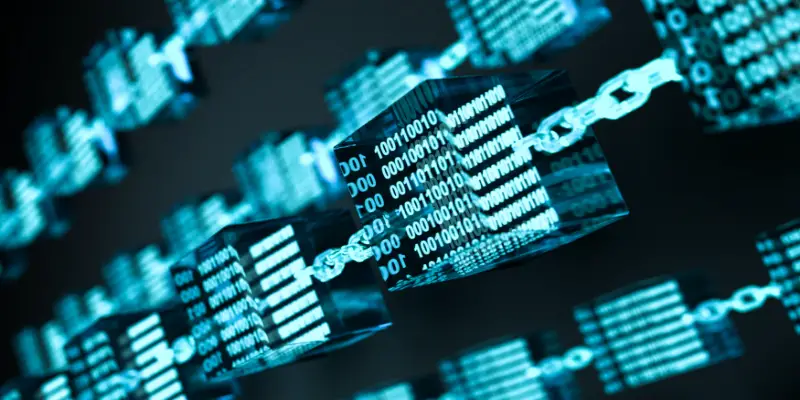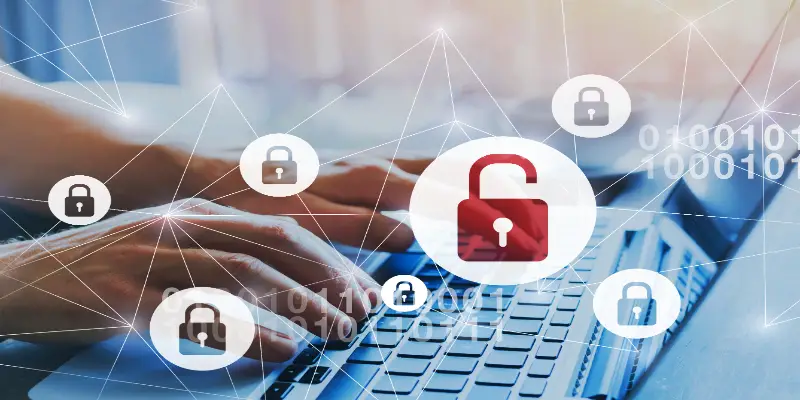Disclaimer: This post may contain affiliate links, meaning we get a small commission if you make a purchase through our links, at no cost to you. For more information, please visit our Disclaimer Page.
Data encryption is a device for transferring data into a new code. Hence, users can only access it with the given login details. You can either encrypt your data or leave it as plaintext.
Data encryption is effective in securing your data by converting a plain text to unreadable format, making it inaccessible by non-authorized parties. It also helps to protect communication systems and prevent criminals from intruding users privacy. Hence, it validates messages originality.

Data encryption is undoubtedly the most vital thing for every information on the internet. You should understand data encryption, and why you should protect your digital properties.
Hence, I will share its importance, the strong encryption methods, its effectiveness, and the unbreakable data encryption algorithm.
Table of Contents
Does Encryption Provide Effective Data Security?
Data encryption provides effective data security by storing information in well-structured system.
It uses an algorithm to store data and encrypt with the correct key. Encryption has provided solutions to organizations and companies with difficulty in securing online information.
Sometimes, employees use external devices to access the company’s information, resulting in severe data loss. Since many companies do not have enough facilities that guarantee optimum security, data encryption happens to be the best solution.
Data insecurity is a threat to many organizations, including growing companies. Encrypting data thus protect against virus attack or malware.
Organizations can access data and applications even beyond the working environment. With the correct login details, you can upload or edit your data.
To provide a highly effective solution, ensure you auto-encrypt your data. Hence, you would not need to enter the data manually. In my years of experience, controlling emails is a great strategy to ensure data retention.
In organizations with a remote workforce, you can run software that encrypts your applications, email, and devices.
Whenever a person uses a smartphone or device to purchase an item online, the user information remains hidden from other persons or third party.
During encryption, three components known as encryption engine, key management, and data run at once. On your laptop, these components are present in the same storage space.
It is also different from a structured system. Each component appears in various storage spaces to reduce exposure risk to damages or system failure.
How Encryption Protects Data
As long as you connect to the web, you can encrypt your text messages or other vital information with a compatible device.
During encryption, it converts your text to unreadable text, which remains accessible to an authorized user. Hence, there is no room for an unauthorized user to access the information.
Often, big organizations encrypt data with the secure sockets layer, known as SSL. Since employees send data from one website to another, SSL secures your information during this process. Hence, you can be sure invaders cannot access your data during transit.
In previous times, I got a virus into my system by running an unsecured URL. How do I know this? An unsecured URL misses the s in its bar. That is, “http://” instead of “https://”. Hence, make sure the URL bar is complete before running your transactions.
Before an outsider can access users’ information, he needs to use the correct cipher to unlock the data. Meanwhile, it is difficult for an intruder to get the right key. Hence, it makes encryption more secure than ever.
Historically, data encryption was only for governments and military personnel, but thanks to technology.
Furthermore, encryption protects your data using two different methods, known as symmetric and asymmetric ciphers.
Symmetric Ciphers
Symmetric ciphers use a single key for encryption. It is also known as secret key encryption. The ciphers operate on the shared model by distributing the key between the sender and every authorized authority.
It provides faster encryption performance than the asymmetric ciphers.
Governments encrypt their digital assets using the Advanced Encryption Standard (AES). Today, AES is the most popular symmetric key.
Symmetric encryption enhances key wrapping processes. Key wrapping is a security feature enabled in key management. The software automatically protects and blocks unauthorized parties from accessing the data.
Asymmetric Ciphers
The asymmetric ciphers operate with two keys of different types. It is also known as public-key encryption. While many people use symmetrical ciphers to encrypt data, they maximize asymmetric ciphers in sharing a secret key between websites.
The asymmetric ciphers are highly technical, using prime numbers computing techniques. Robert-Shamir-Adleman (RSA) is the most popular asymmetric key.
Cryptographic Hashing
In hashing, developers translate characters string into a fixed key without losing the original content. Encrypting your data with a hash function is a quick way to detect error or invasion.
You may wonder how I could detect a theft within few seconds. Thanks to the hash function. A small alternation could cause a transparent change to the hash product.
The hash function uses the one-way encryption method since users or parties do not share keys between themselves.
To create effective data encryption, ensure your hash function is calculative, fixed, specific, and reveals no input information during processing.
Message-Digest Algorithm 5 (MD5) and Secure Hashing Algorithm (SHA-2 and SHA-3) are the most popular hashing keys.
How Important is Data Encryption?
Data encryption is vital to every successful business. It helps to keep a record of workflow and measure the success track.
The importance of data encryption to every individual, business, and organization cannot be over-emphasized. However, here are the top benefits I high-listed for every user.
Internet Privacy
Data encryption privatize your online information and keep it in a “user only” mood. It ensures the email links you receive are encrypted and prevent you from clicking corrupt links.
For any email you receive, confirm if the SSL encryption runs from your web browser.
Meeting Regulatory Requirements
Big and established businesses are required to meet regulatory requirements. Asides from protecting online information, they should meet standard measures, including data encrypting policy.
For instance, health care sectors should follow the Health Insurance Portability and Accountability Act (HIPAA).
In the business world, retailers should follow the Fair Credit Practices Act (FCPA). Merchants should comply with Payment Card Industry Data Security Standard (PCI DSS) to encrypt customers’ card details.
These regulations are put in place to protect customers’ rights or privacy. As an individual, your preferred company adherence to regulatory requirements builds the trust in you.
Hence, it becomes mandatory for any successful business.
Data Confidentiality
With data encryption, you can protect your IT assets. It builds users’ confidence and helps to store assets as long as possible.
Data Integrity
When you encrypt data, you can be sure the data is neither changed nor formatted. Encryption is a way to prove data integrity, especially among staffs in an organization.
Cyber Security
It is one of the popular reasons people encrypt their data online. Many cybercriminals invade personal data for financial selfishness.
So, you should encrypt your information to prevent it from being a source of wealth for a criminal out there.

What is the Strongest Method of Encryption?
The strong method of encryption involves a large cryptographic key. A large key of 256 is often hard to break. With advanced technology, many data encryption contains large numbers.
Asides from large keys, using a system including protocols, algorithms, and designs plays a part in creating strong encryption.
From the user’s end, they may not guide data passwords appropriately. Hence, developers ensure standard operating systems and data centers.
Some algorithms were proven to be cryptographically strong than others. Examples of these algorithms are;
Advanced Encryption Standard (AES)
Advanced Encryption Standard uses the symmetric keys approach. AES offers strong computing compatibility and large functions. Moreso, it operates at a faster speed than many of its symmetric counterparts.
AES operates on high standards, improving its data security measure. Often, it applies to messages platforms such as WhatsApp.
It uses a 128-bit block which is strong enough to protect any data from intruders. The receiver and sender use the same key for decryption and encryption.
Triple Data Encryption Standard (TripleDES)
Generally, TripleDES uses three 56-bits keys to encrypt data. It is the reason for referring to it as TripleDES. Although the three keys are similar, they are independent of one another.
TripleDES is rarely in use today since the development of AES. However, its large key still helps to create strong cryptography.
Twofish Encryption Algorithm
Twofish encryption algorithm has large functions, reaching up to 128-bit blocks. It uses the symmetric cipher method, with one-way encryption and decryption.
Twofish is highly compatible with 32-bit and 8-bits CPUs. Hence, you can be sure of maximum data security with Twofish encryption. Contrary to other strong cryptography, it posses some outstanding features.
It uses the key-dependent substitution box during its operation. This implies that it does not depend on substitution boxes for its performance, except with ciphertext.
Also, it involves a longer setup duration than others, especially if the data is a large file. It is fast and resilient, making it a good option for PC users.
Blowfish Encryption Algorithm
When blowfish came about in 1993, it replaced the old limitation of data encryption. Initially, encryptions were only possible by patents. However, the story turned around, making it possible for interested users to access it.
Some believe it is completely the same as data encryption standard (DES), which is not correct. From my many years of experience, I observed it provides more stable encryption security.
Unlike the algorithms previously mentioned, it operates on asymmetric encryption, using a single structure for decryption and encryption.
Blowfish has about 64-but blocks, which is relatively small compared to other methods.
The four methods mentioned above are the strongest options so far.
Is Any Encryption Unbreakable?
I have worked with several encryptions, and I can tell you that no encryption is truly unbreakable except the one-time pad cipher.
Often, any new algorithms launched today already has malware ready to invade it. With the fast rate of computers, I recommend you keep your encryption updated.
The one-time pad algorithm involves a complex structure, which is often inconvenient for users. Hence, users stick with the breakable algorithm regardless.
The pad destroys used data and ensures that no person uses it again for a malicious act.
Moreover, a one-time pad is not popular because the key must be the same as the message length you are encrypting.
You cannot communicate with several people together because a one-time pad only allows you to share data between two people. As a result, many users neglect the one-time pad algorithm even though it is unbreakable.
Conclusion
Data encryption remains effective as long as users monitor the protected information. Likewise, providers should securely manage the encryption and ensure users can access it when needed.
To optimally encrypt data, create a benchmark on how a corporation monitors, configures, and controls the key’s permission.
